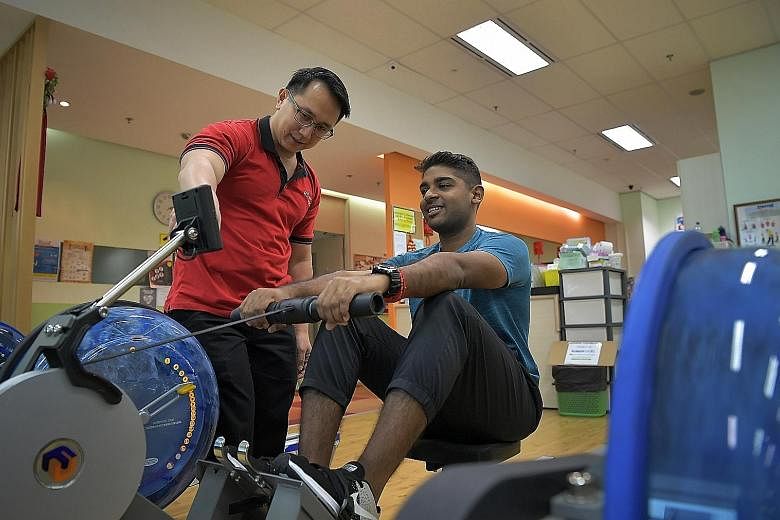At 25, Mr Sathish Panirchelvam was too young to have a heart attack.
Or so he thought, until he did suffer one, in March.
The cause may have been a rare, undiagnosed condition, he said, but having gained a second chance changed his outlook on life. He quit smoking, started eating better and now works out once a week at the Singapore Heart Foundation's wellness centre. "I didn't take it seriously because I thought I was too young (to experience a heart attack). And afterwards, I felt angry at myself for not being kind enough to my body previously," said the owner of an events company.
Like Mr Sathish, more heart patients are being kind to their bodies by ensuring they get regular exercise and health consultations at SHF's wellness centre and heart health hub.
The number of patients using both facilities has gone up by about one-third from 1,152 in 2014 to 1,586 last year, said the heart foundation.
The centre and hub each offers subsidised exercise classes, as well as free health talks, consultations on nutrition and stress management workshops. They are free for referred patients but members of the public have to pay.
Dr Chee Tek Siong, a member of the SHF's board of directors, chalks the increase down to greater awareness that prevention can lower the risk of a cardiac event, such as a heart attack, which can damage the heart muscle.
"Preventive therapy involves therapeutic lifestyle changes such as increasing physical activity, modifying dietary habits and coping with psychological issues such as depression and stress," he said.
By making these changes, heart patients can reduce their risk factors such as high blood pressure, diabetes, obesity or abnormal levels of lipids such as cholesterol in the blood, he noted.
Cardiovascular disease, such as heart disease and stroke, accounted for nearly one in three deaths in Singapore last year, according to the Ministry of Health. Deaths from these causes rose slightly from 5,799 in 2014 to 5,879 in 2015 and 5,905 last year.
To further reduce them, Dr Chee suggests raising awareness of risk factors and symptoms through public education, as well as training more people to perform cardiopulmonary resuscitation (CPR) and making more automated external defibrillators (AEDs) available to the public.
The SHF has also started trials for a home rehabilitation service and a "mobile community cardiac rehabilitation service" targeted at those who are unable to go to its centres or hospitals.
This mobile service has conducted exercise sessions and health consultations at the Bukit Gombak Sports Complex ActiveSg gym since last month, with each weekly 90-minute session costing $4.
The session is only for patients who are referred from Ng Teng Fong General Hospital and the National University Hospital. They also take part in exercise classes at these mobile centres.
As for Mr Sathish, he is getting on with the business of living and though he occasionally has chest pain and difficulty breathing, he knows help is around the corner.
"It gets easier when you start to accept it and when you look forward to doing different things, you tend to forget about the pain," he said.


